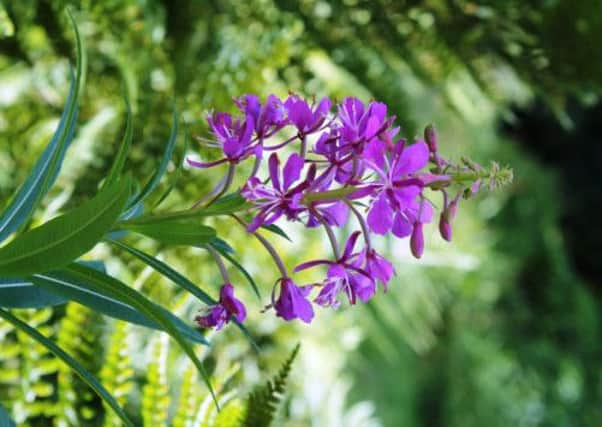Wild rover


Just when we thought it couldn’t get any better, along came weeks of warmth and almost-cloudless skies, and certain plants made hay while the sun shone.
And one of the biggest winners this year has been Chamaenerion angustifolium, once regarded as a thing of beauty, an elegant addition to any garden, but now considered nothing but an irksome and very successful weed.
Advertisement
Hide AdAdvertisement
Hide AdAs a wild flower, it is quite stunning, beloved by several forms of wildlife, and it was once regarded as a symbol of victory.
But the American Fireweed – our very own British Rosebay Willow Herb – became so successful at growing and spreading (it’s a perennial that increases its numbers by seeding and creeping with fleshy white rhizomes) that it was quickly turfed out of conventional beds and borders to discover a new life in the great outdoors.
In flower, it’s one of the most easily identifiable plants in the country. In large clumps, it makes a striking sight, and its fluffy seedheads fill the August air like large snowflakes. It’s gorgeous; it’s also incredibly invasive and, to some people, a pest to be eradicated at all costs.
It was introduced from North America in the 18th and 19th centuries as a garden plant and it soon found that the British climate and terrain suited it admirably. So it escaped the confines of the garden and set about colonising the country, and its invasive behaviour has allowed it to become naturalised.
Advertisement
Hide AdAdvertisement
Hide AdFrom June to August, the violet or rose-purple flowers open gradually; then those small seeds covered with white silky hairs are carried away on the slightest breeze; finally, the pointed leaves turn red and yellow in autumn before the top growth dies back. Rosebay Willow Herb can grow in both acid and alkaline soils but it doesn’t like waterlogged ground.
And yet I have seen it growing more than 1,500ft up on Pennine peat moors, and its appearance on London bombsites during the Second World War raised its status as a sign that Britain, too, would rise from the ashes. Rosebay Willow Herb not only looks good but it also does some good – it is the main food-plant of the Elephant Hawk-moth caterpillar, its nectar is important for, and it was once used as food by native American Indians.
But if you hate it, you hate it. Any weedkiller containing glyphosate is effective in dealing with it. Otherwise, cut it back, year on year, before it sets seed – at least then you get to enjoy the flowers.